Manzanita is a small tree or shrub that grows in the western North America. Manzanita trees grow into twisted and forked shapes that make it impossible to produce any sizable lumber. Manzanita wood also has a great tendency to warp, crack and twist as it dries.
Manzanita wood has traditionally been considered near worthless to foresters and the timber industry. This is mostly because of its small irregular sizes. However manzanita does have some unique properties and is becoming a prized material for some niche markets including crafts and pet supplies.
Even though manzanita wood is small, it has very beautiful grain patterns and colors. Manzanita sometimes grows burls which have their own unique grain patterns. Manzanita burls and straight wood are both prized by wood turners and carvers for making small wood craft products. Manzanita is a very hard and durable wood but works well when green.
Manzanita branches are used by parrot and other exotic bird owners for bird perches and bird stands. Its smooth bark makes a great gripping surface and is hard enough to resist chewing and is non toxic. The irregular shaped branches also provide a varied surface that is good for exercising the birds legs and feet.
Aquarium owners use manzanita wood for both fish and reptiles. Manzanita is visually appealing because of its unique shapes and colors and it is chemically inert, resists decay and is non toxic. Its twisted irregular shapes provide good shelter and hiding places for reptiles, fish, and other aquatic life.
Manzanita is a popular wood for using as center pieces and wedding trees, and wedding table centepieces because of its strong stiff wood and heavily forked branches. Manzanita centerpieces and wedding trees are sold with and without bark. The bark is a smooth attractive dark reddish color. When the bark is peeled the wood underneath is a creamy white.
Manzanita trees don’t need a lot of water to survive and are often found in hot arid climates like the foothills of the sierras and in low elevations of Southwest Oregon. There are high elevation varieties of manzanita that grow in sub-alpine areas. Because these areas get heavy snow, they are usually low creeping shrubs or more of a ground cover that are too small for making wood products.
In areas where manzanita are native, it can grow quite abundantly. Manzanita trees are easily killed by wildfire and stands of manzanita are known for burning extremely hot. But the seeds can resist fire and often sprout back heavily after a fire. Manzanita will often compete with larger trees that are considered more important timber species like fir and pine. Because of this manzanita is often cleared to allow larger trees to grow and to reduce the danger of wildfires. Because of this, using manzanita wood products is considered to be environmentally friendly and helps to restore forests.
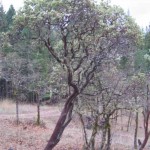

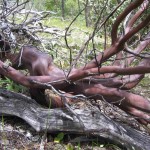
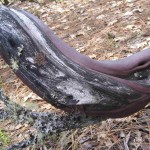
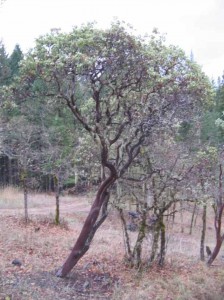
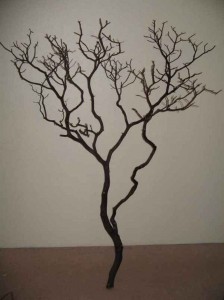
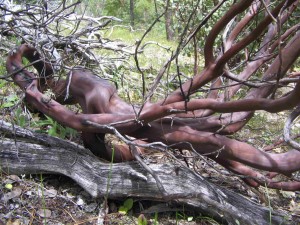
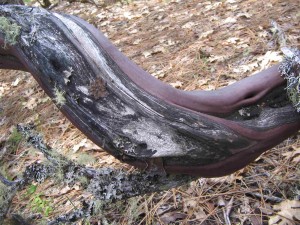
Mght you have a gnarled Manzanita stem about 10 or 12 feet long That you could price delivered to Salt Lake City
There are uses for medicinal marijuana pipes. Little squirrely to work with, but reject rates have been low, and cracks, knots and variations in heartwood, skins make this a superior wood to make pipes from. Also it smokes delicious and is non-toxic.
i am interested in purchasing a few starts to try and grow a couple trees in my backyard. We live near a wildlife preserve and have dozens of birds around, I read the birds like security the manzanita tree provides. Is there any way possible I might purchase a few starts from you and have them sent to me by mail? I’ve been looking everywhere and no one seems to sel it.
Thank you,
Winnie
Can you tell me where in Oregon to get my own Manzanita wood
Brian Tisdale – in any of the dryer forests in Oregon (Central & Eastern). It is not protected so you should be able to go out and harvest small amounts.
I live in layton Utah and acquired a lot of desert ironwood. I had a couple burls that I just now discovered are Manzanita. Thanks!